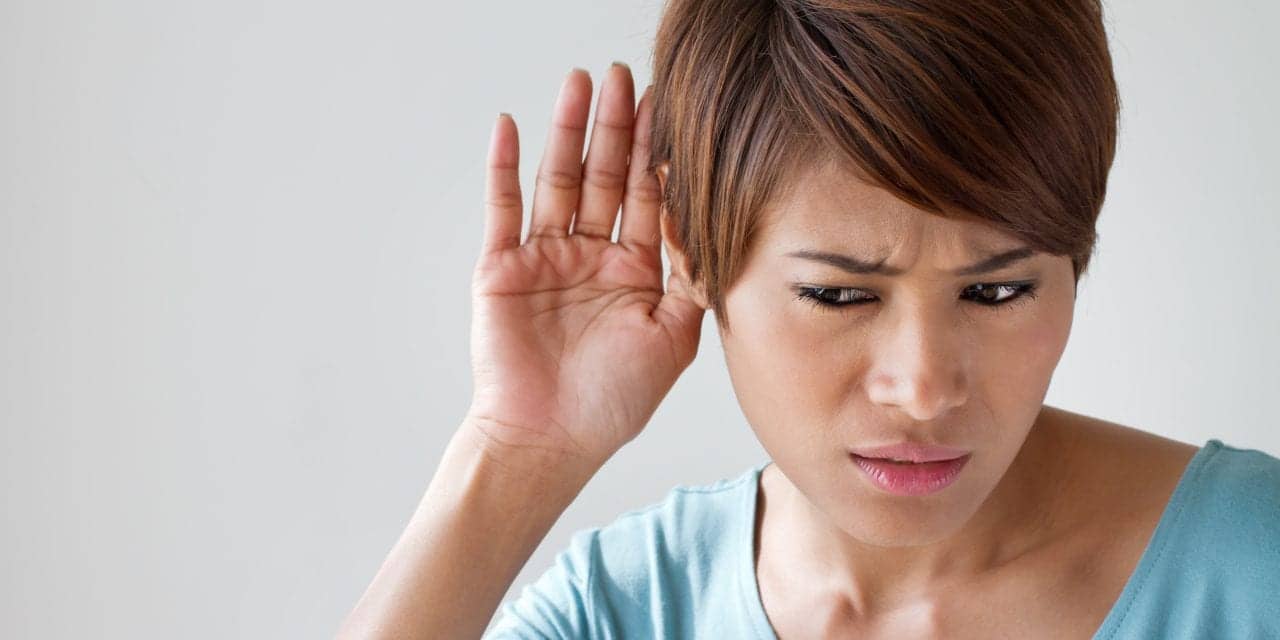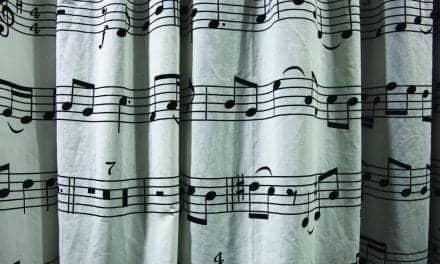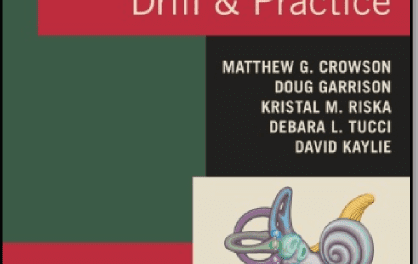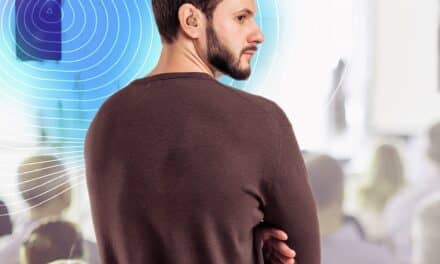The American Academy of Otolaryngology–Head and Neck Surgery Foundation announced that it published the Clinical Practice Guideline: Sudden Hearing Loss (Update) in Otolaryngology–Head and Neck Surgery. Sudden sensorineural hearing loss (SSNHL) affects five to 27 per 100,000 people annually, with about 66,000 new cases per year in the United States, according to the organization.
“Sudden hearing loss is a frightening symptom for patients that can dramatically decrease their quality of life,” said Seth R. Schwartz, MD, MPH, who served as the methodologist for both the 2012 guideline and the 2019 guideline update. “Prompt recognition and management of sudden sensorineural hearing loss may improve hearing recovery and quality of life. That is the overarching objective and purpose of this guideline update.”
SHL is defined as a rapid-onset subjective sensation of hearing impairment in one or both ears. The hearing loss in SHL may be a conductive hearing loss (CHL), sensorineural hearing loss (SNHL), or mixed hearing loss, defined as both CHL and SNHL occurring in the same ear. CHL and the conductive component of mixed hearing loss may be due to an abnormality in the ear canal, tympanic membrane (‘‘ear drum’’), or middle ear.
For most patients with SHL, their medical journey often starts at an emergency room, urgent care clinic, or primary care physician’s office, with dizziness present in 30-60% of cases. The initial recommendations of this guideline update address distinguishing SSNHL from CHL at the initial presentation with hearing loss. They also clarify the need to identify rare, nonidiopathic SSNHL to help separate those patients from those with idiopathic sensorineural hearing loss (ISSNHL), who are the target population for the therapeutic interventions that make up the bulk of the guideline update. By focusing on opportunities for quality improvement, this guideline should improve diagnostic accuracy, facilitate prompt intervention, decrease variations in management, reduce unnecessary tests and imaging procedures, and improve hearing and rehabilitative outcomes for impacted patients.
“While the original guideline was a big step, this update provides an opportunity to improve diagnostic accuracy, facilitate prompt intervention, reduce unnecessary tests, and improve hearing and rehabilitative outcomes for patients,” said Schwartz. “Sudden sensorineural hearing loss, particularly when accompanied by tinnitus and dizziness, can cause a great reduction of quality of life. Patients may experience fear and frustration at the inability to identify a cause for their hearing loss. The impact of this condition on a patient’s function and well-being underlies the importance of an updated guideline to optimize care of patients with this debilitating condition.”
The update highlights urgency in managing this condition, by emphasizing early hearing testing to confirm the diagnosis and early initiation of therapy. Changes from the prior guideline also include the incorporation of new evidence profiles to include quality improvement opportunities, confidence in the evidence, and differences of opinion; inclusion of 10 clinical practice guidelines, 29 new systematic reviews, and 36 new randomized controlled trials; addition of an algorithm outlining how the Key Action Statements (KASs) integrate into patient care; enhanced emphasis on patient education and shared decision-making with tools provided to assist, among a number of other differences noted specifically in the guideline.
Of the 14 KASs, the guideline update group made strong recommendations against the following: 1) Clinicians should not order routine computed tomography (CT) of the head in the initial evaluation of a patient with presumptive SSNHL; 2) Clinicians should not obtain routine laboratory tests in patients with SSNHL; and 3) Clinicians should not routinely prescribe antivirals, thrombolytics, vasodilators, or vasoactive substances to patients with SSNHL.
This multidisciplinary guideline update is intended for all clinicals who diagnose or manage adult patients, 18 years of age or older, who present with SHL.
FACT SHEET
What are the Key Action Statements (KASs) or significant points made in the guideline:
KAS1: Exclusion of Conductive Hearing Loss (CHL) – Strong recommendation
Clinicians should distinguish sensorineural hearing loss (SNHL) from CHL when a patient first presents with SHL.
KAS2: Modifying Factors – Recommendation
Clinicians should assess patients with presumptive SSNHL through history and physical examination for bilateral SHL, recurrent episodes of SHL, and/or focal neurologic findings.
KAS3: Computed Tomography – Strong recommendation against
Clinicians should not order routine computed tomography (CT) of the head in the initial evaluation of a patient with presumptive SSNHL.
KAS4: Audiometric Confirmation of SSNHL – Recommendation
In patients with SHL, clinicians should obtain, or refer to a clinician who can obtain, audiometry as soon as possible (within 14 days of symptom onset) to confirm the diagnosis of SSNHL.
KAS5: Laboratory Testing – Strong recommendation against
Clinicians should not obtain routine laboratory tests in patients with SSNHL.
KAS6: Retrocochlear Pathology – Recommendation
Clinicians should evaluate patients with SSNHL for retrocochlear pathology by obtaining an MRI or Auditory Brainstem Response (ABR).
KAS7: Patient Education – Strong recommendation
Clinicians should educate patients with SSNHL about the natural history of the condition, the benefits and risks of medical interventions, and the limitations of existing evidence regarding efficacy.
KAS8: Initial Corticosteroids – Option
Clinicians may offer corticosteroids as initial therapy to patients with SSNHL within two weeks of symptom onset.
KAS9a: Initial Therapy with Hyperbaric Oxygen Therapy – Option
Clinicians may offer, or refer to a clinician who can offer, hyperbaric oxygen therapy (HBOT) combined with steroid therapy within two weeks of onset of SSNHL.
KAS9b: Salvage Therapy with Hyperbaric Oxygen Therapy – Option
Clinicians may offer, or refer to a clinician who can offer, hyperbaric oxygen therapy (HBOT) combined with steroid therapy as salvage within one month of onset of SSNHL.
KAS10: Intratympanic (IT) Steroids for Salvage Therapy – Recommendation
Clinicians should offer, or refer to a clinician who can offer, IT steroid therapy when patients have incomplete recovery from SSNHL two to six weeks after onset of symptoms.
KAS11: Other Pharmacologic Therapy – Strong recommendation against
Clinicians should not routinely prescribe antivirals, thrombolytics, vasodilators, or vasoactive substances to patients with SSNHL.
KAS12: Outcomes Assessment – Recommendation
Clinicians should obtain follow-up audiometric evaluation for patients with SSNHL at the conclusion of treatment and within six months of completion of treatment.
KAS13: Rehabilitation – Strong recommendation
Clinicians should counsel patients with SSNHL who have residual hearing loss and/or tinnitus about the possible benefits of audiological rehabilitation and other supportive measures.
10. Where can I get more information?
Visit http://www.entnet.org/SHLCPG for more information.
Source: The American Academy of Otolaryngology–Head and Neck Surgery Foundation





